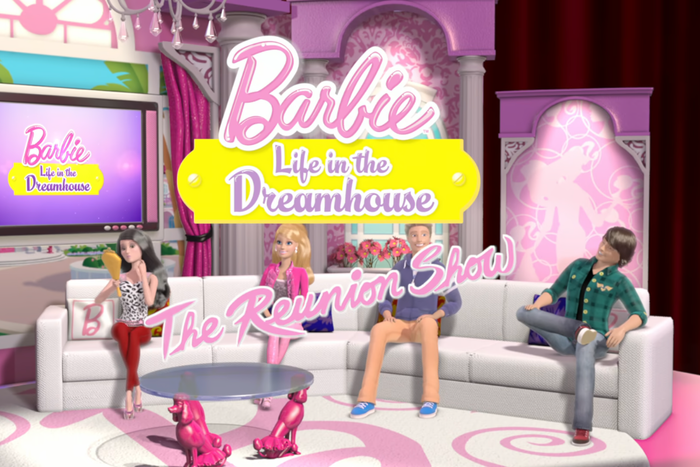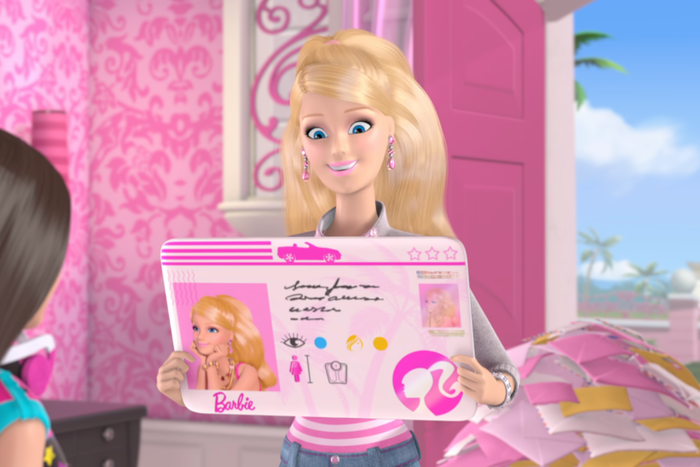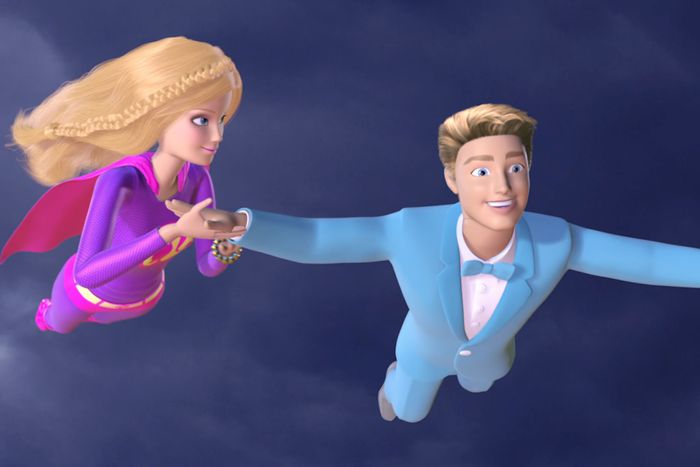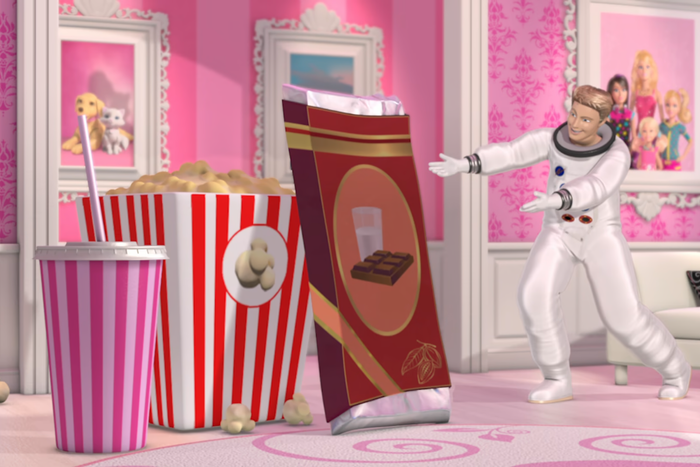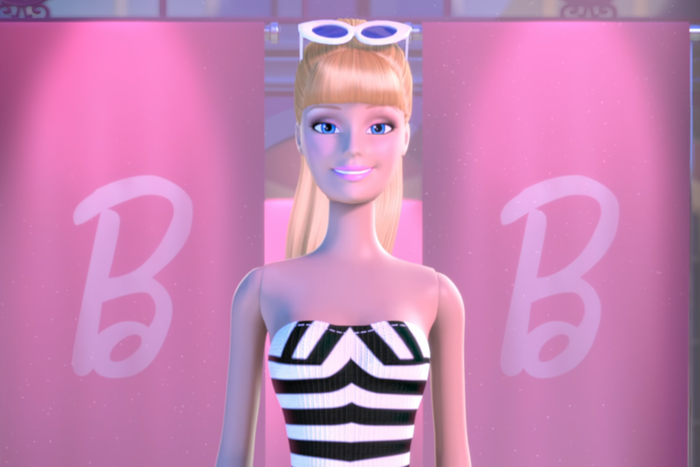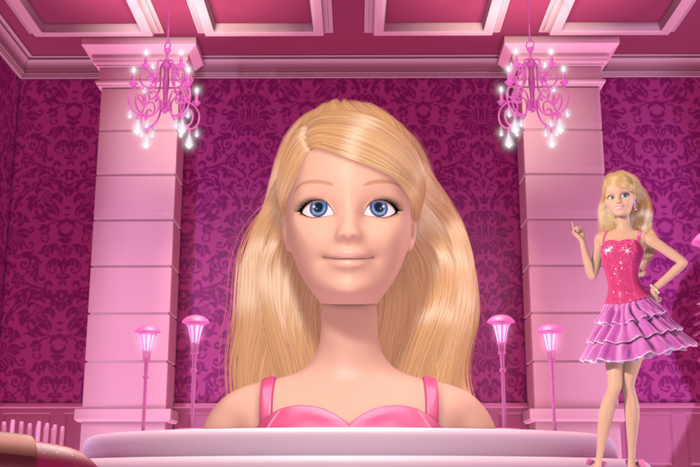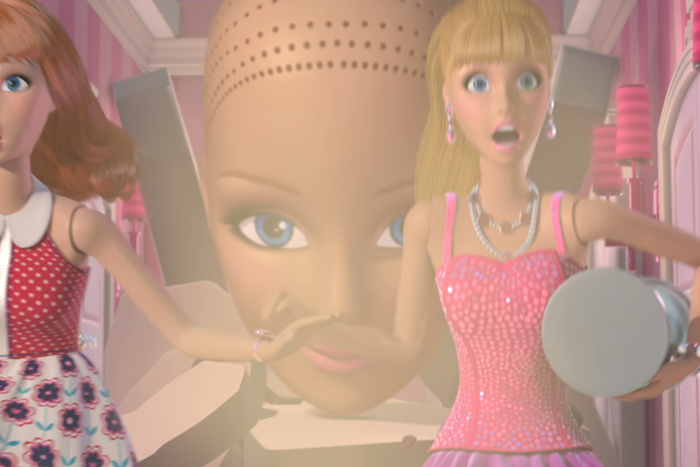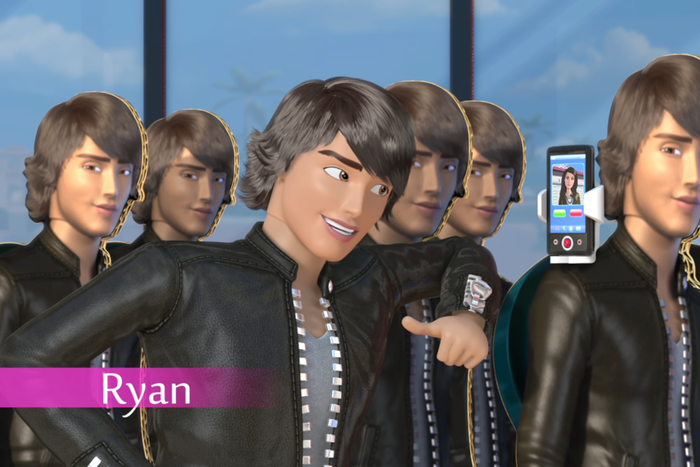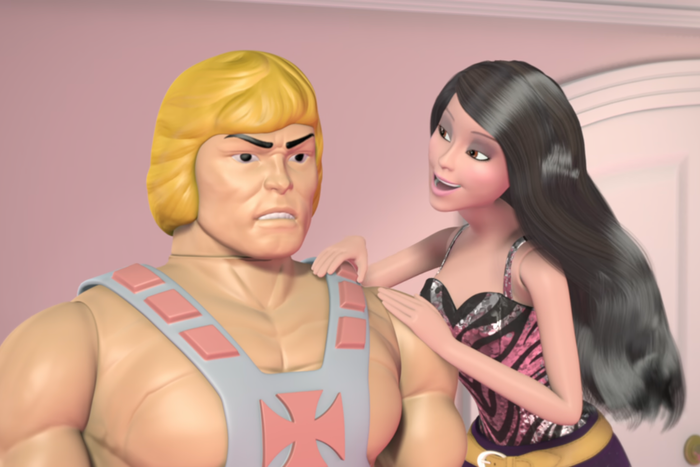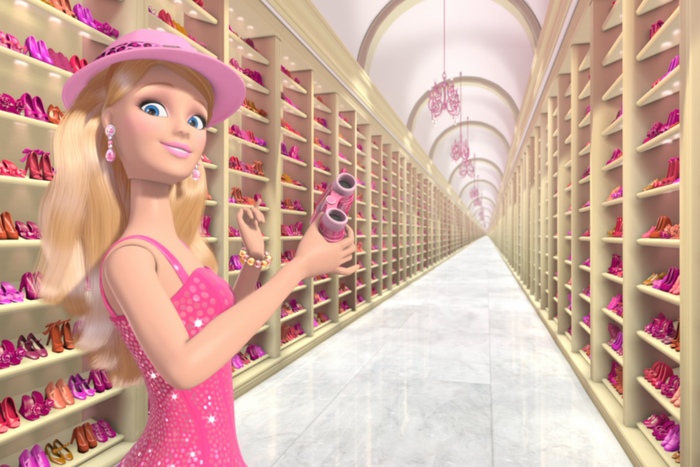
This ain’t your mother’s Dreamhouse. Or yours, most likely. In fact, until Greta Gerwig came along to escort Barbie to Oscar territory, I’m not sure they ever made a Dreamhouse like this one.
Created at the zenith of the Obama era, the animated web series Barbie: Life in the Dreamhouse anticipated the fourth-wall-breaking, consumerism-lampooning, Ken-mocking comedy of 2023’s Barbie by over a decade. It’s smart, it’s funny, it has a 12-episode run on Netflix right now, and if you’re looking for more of the movie’s cheerfully subversive magic, it’s all right here.
Written primarily by David Wiebe and Robin J. Stein and produced by Mattel as a series of web and YouTube shorts — collected by theme into the 12 Netflix episodes — from 2012–15, Barbie: Life in the Dreamhouse has little in common with the glut of other CGI Barbie animated shows littering the big red streaming service. This isn’t a straightforward comedy-adventure kids’ cartoon, though it’s certainly kid-friendly (no jokes about Ken’s flesh-colored bulge in this one). Much like the movie, it’s an admittedly gentle but extremely sharp satire of the doll it’s supposed to be marketing. I’m not sure what Barbie creator Ruth Handler would think of it, but Don Draper would be pleased.
Wiebe, Stein, and their crew of talented writers, animators, and voice actors (led by Kate Higgins as Barbie herself) mined decades of Barbie iconography and stereotypes to get adult-size gags out of the children’s toy. In the process, they wrote a partial playbook for the approach the film would take years later. At this point, you may be looking at the shocking pink plasticity of the series and thinking I sound crazy. Trust me, ever since my kids found the series ten years ago, I’ve been getting that on a regular basis. Until people watch, that is. Life in the Dreamhouse, like the Matrix, is something you have to experience for yourself. If you liked the movie, you’ll see the two have a lot in common.
“Hi, Barbie!”
Set in a sort of utopian Malibu “built on top of ancient glitter aqueducts,” Life in the Dreamhouse stars fashionista and Renaissance woman Barbie Roberts and her fawningly devoted counterpart, Ken. Various friends, family members, frenemies, pets, and a sentient closet round out the cast, including besties Nikki and Teresa, hypercompetitive Summer, old-fashioned Midge, scheming twins Raquelle and Ryan, and kid sisters Skipper, Stacie, and Chelsea.
As the gang get in various comedic misadventures — a beach trip ruined by rain, a bath day for Barbie’s pets, a dozen Barbie-bots running amok, the usual — reality-show tropes like confessional cutaways, a reunion show, and an extended parody of The Amazing Race regularly break the fourth wall to provide running commentary on the shenanigans.
She’s Every Barbie
It takes a nation of Barbies to hold these jobs. At least, that’s how Barbie the movie explains how its leading lady has had what the show refers to as “135 careers — and counting!” Without a different Barbie for every gig, how does Life in the Dreamhouse reconcile all this? It doesn’t, and that’s the gag. This Barbie is every Barbie. She’s been a flight attendant (that was career No. 37), a model, a rock star, you name it.
The fact that this causes juuuuust a few continuity problems is a constant source of comedy. In an episode where Barbie’s getting her driver’s license, multiple characters ask, “Weren’t you a race-car driver?” People try to calculate her age based on her many jobs: “I know she was a doctor, and you’ve got to go to school for at least 11 years for that …,” “Well, she ran for president, and you’ve gotta be at least 35 …”
He’s Just Ken
Unlike in the movie, the Barbie and Ken of Life in the Dreamhouse are unambiguously girlfriend and boyfriend. But Dreamhouse Ken isn’t the barely repressed macho dope of the movie. This Ken is the kind of boyfriend who takes you out on a date for the 43rd anniversary of the first time you held hands. In a Superman parody, he’s the one doing the Lois Lane “Can you read my mind?” bit.
Simply put, Ken is in his simp era. In much the same way movie Ken withers beyond Barbie’s gaze, cartoon Ken lives only to serve his special lady. There’s an episode where he can’t hold down a job because he runs to the Dreamhouse to open pickle jars (that she’s already opened) or kill spiders (that are just sweater fuzz) whenever his “Barbie sense” tingles. He routinely displays superhuman strength and speed if Barbie or her sisters needs him for any reason. At one point, he abandons launching a space shuttle to bring her (human-scaled) snacks so they can watch her favorite movie, Sad and Romantic: The Sequel, together.
Ken’s constantly working to improve Barbie’s life with semi-successful inventions like CLOSET, the sentient fashion AI program that safeguards her extensive wardrobe. (With its single glowing red eye, CLOSET is a clear parody of HAL 9000 from 2001, beating Gerwig to the Kubrick-homage punch.) Even when he does build a Mojo Dojo Casa House–esque Ken Den, it’s just a nice waiting room for the guy dolls to hang out in while the girl dolls go shopping. He means well, that’s the main thing.
Life in Plastic
Life in the Dreamhouse doesn’t pretend Barbie, Ken, and company are real people any more than the movie does. Both the show and the characters themselves are constantly peeling back the plastic curtain, making jokes based on the idea that yeah, we’re dolls, we know it, it is what it is, complete with those same close-ups on Barbie’s perpetually pointed feet as she gets out of bed in the morning we saw in the movie.
Some of these references are subtle enough. Barbie’s very first look in the show’s very first fashion show? The same classic black-and-white striped swimsuit that launched the original doll — and a monolithic Margot Robbie in the movie. But over time, the references get ramped up to the point of absurdity. Midge, the oldest of Barbie’s friends, envies her pals’ points of articulation. Cars come with foldout assembly instructions. And fans of Weird Barbie, rejoice: There are multiple gags about unmanageable doll hair.
The highlight is a game show hosted by Barbie’s sister Skipper to determine which of her friends truly knows Barbie best. Barked out by her BFFs in rapid succession, the answers include “1959,” “Millicent,” “Barbie & the Rockers,” “the moon,” “Mermaid Fairy Princess,” “George and Martha Roberts,” and “Sugar, spice, and polyvinyl chloride.” It’s a font of Barbie bar trivia.
Size Matters
Remember the bit in the movie where Barbie simply floats down from the second story of her house to the ground, since, as Helen Mirren helpfully informs us, girls just pick up their Barbies and move them instead of making them take the stairs? Or where the Mattel execs try to get life-size extradimensional-visitor Barbie back inside her own gigantic packaging? Sight gags like that are Life in the Dreamhouse’s bread and butter.
When Barbie gets her driver’s license, she has to hold it up with both hands, since it’s the size of an actual human driver’s license. When Barbie is forced to pack up some of her apparently billions of belongings, her friends wrap them up in a cardboard box the size of the Dreamhouse, with a comically large roll of packing tape operated like a hamster wheel.
It’s the giant heads that really get me, though. When Barbie shows her friend the makeup room, with a colossal bust like the “styling heads” made for practicing hair and makeup as the centerpiece? Reader, I lost it. There’s also a brief Indiana Jones parody where, instead of a boulder, Barbie unleashes a gigantic unstoppable bald Barbie head with all the hair torn out and those icky little scalp holes showing. Still disturbing, even when animated!
“We’re Actually Doing Patriarchy Very Well”
Life in the Dreamhouse doesn’t get as serious as the movie does about feminism, patriarchy, or consumerism, words you’ll never hear in the show. But the themes are all there. Constantly scheming to pry Barbie and Ken away from each other, fraternal twins Ryan and Raquelle represent all that’s crass about living dolls.
A constant thorn in Ken’s side, Ryan is a vain, macho moron who fancies himself God’s gift to doll-kind. At one point, he threatens to sing “a seven-act rock opera about Barbie” at Barbie — sound familiar? Meanwhile, Raquelle’s obsession with being the coolest, prettiest, best-dressed, most popular doll in Malibu would destroy her like Gollum if she ever got anywhere near having something like Barbie’s walk-in closet. (“A day or two’s walk, tops.”)
If Ryan’s tomcat vapidity represents a stereotypical male weakness, Raquelle’s backstabbing materialism plays with its female equivalent. It’s not America Ferrera’s Oscar reel, but America Ferrera’s character never hit on a He-Man action figure. Only in the Dreamhouse, kids.


